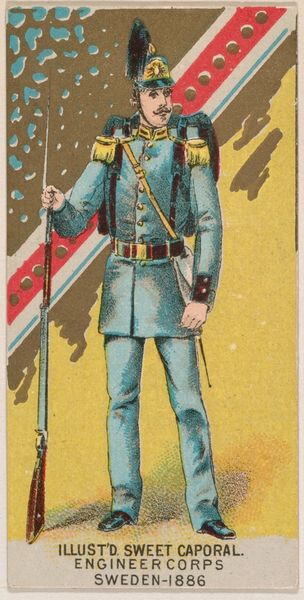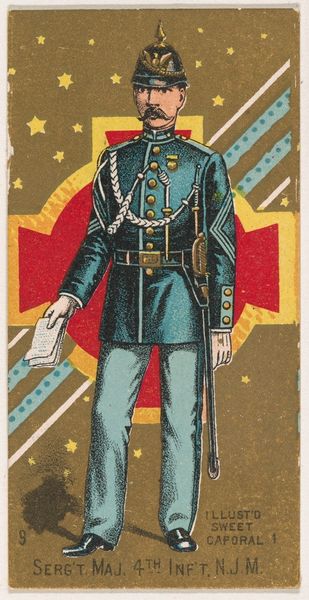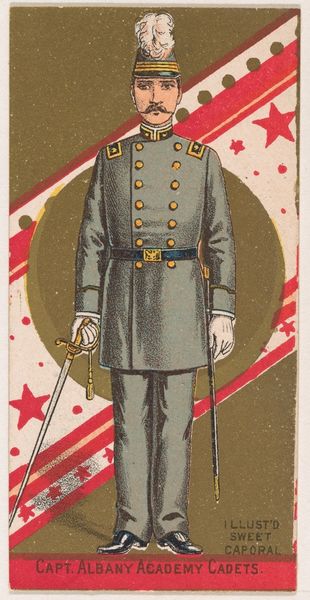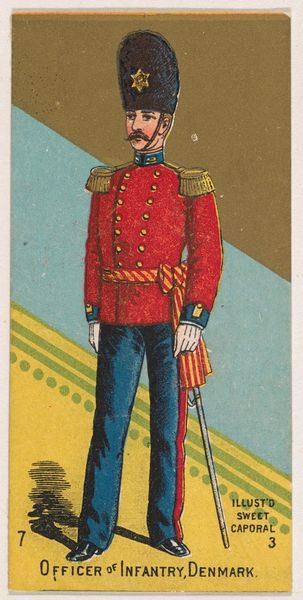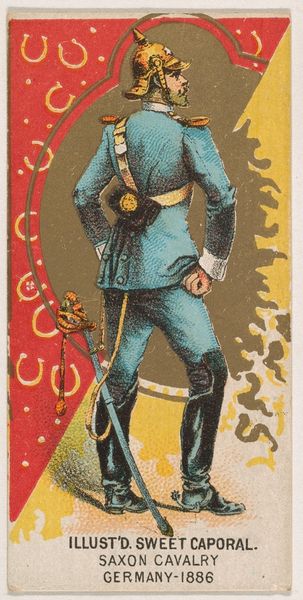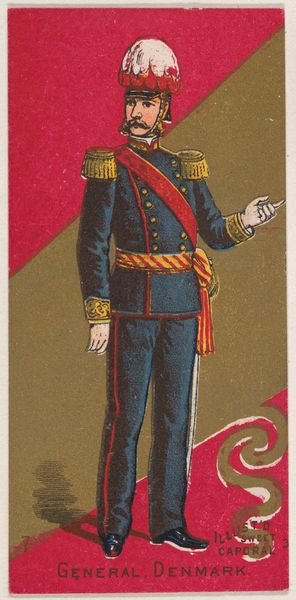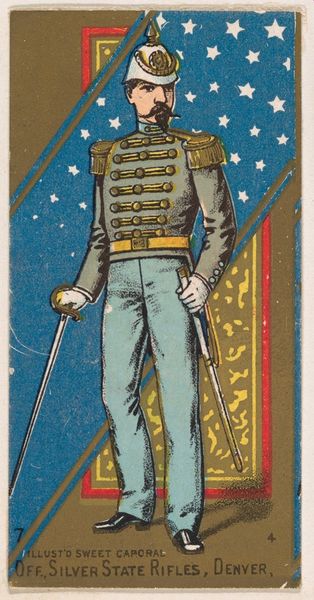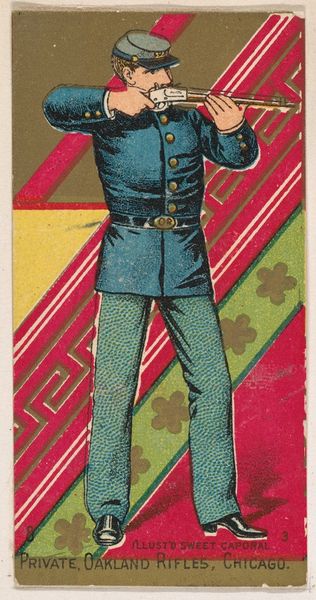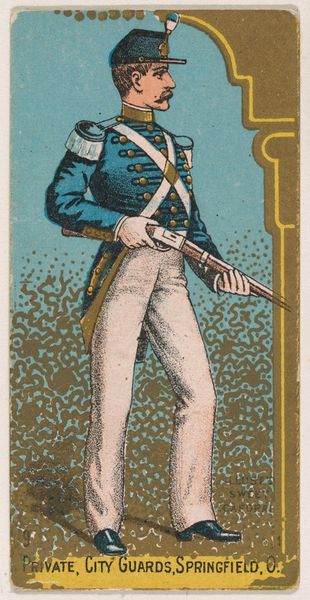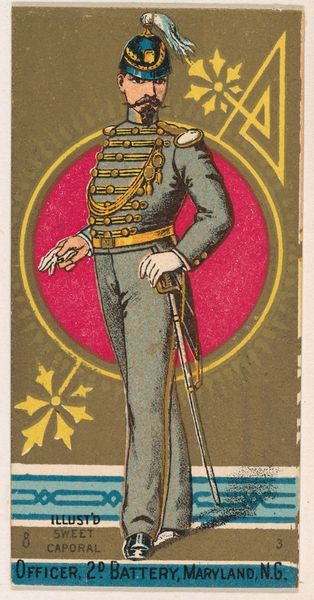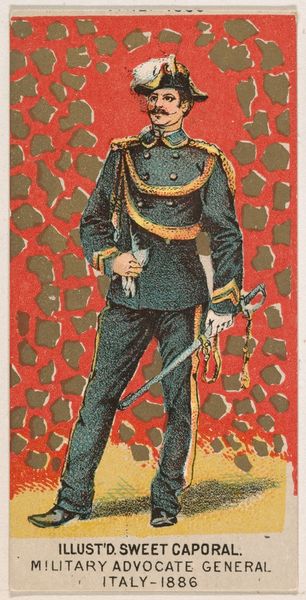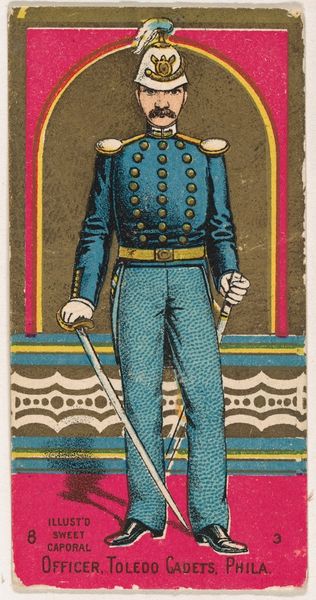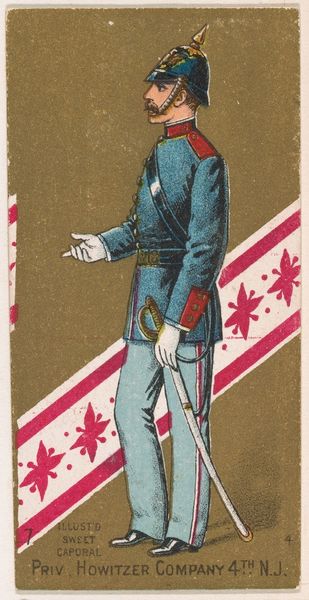
Officer, 3rd Regiment, Illinois, National Guard, from the Military Series (N224) issued by Kinney Tobacco Company to promote Sweet Caporal Cigarettes 1888
0:00
0:00
drawing, print
#
drawing
#
quirky illustration
#
childish illustration
#
cartoon like
#
cartoon based
# print
#
caricature
#
cartoon sketch
#
illustrative and welcoming imagery
#
men
#
cartoon style
#
cartoon carciture
#
cartoon theme
Dimensions: Sheet: 2 3/4 × 1 1/2 in. (7 × 3.8 cm)
Copyright: Public Domain
Editor: Here we have a rather charming print from 1888, “Officer, 3rd Regiment, Illinois, National Guard,” by Kinney Brothers Tobacco Company. It looks like it was a promotional item. The style feels very much of its time, slightly stiff, but there is a certain whimsy about it, too. How do you interpret this work? Curator: I see layers of symbolic intent embedded within what seems like a simple portrait. Notice the almost theatrical presentation of the officer – a static pose set against ornate backgrounds. He becomes a symbol of the idealized soldier. These cards created cultural touchstones and functioned as vessels of aspirational imagery. The very act of distributing them with cigarettes implicates them with power, luxury, and, in the case of the soldier, national pride. Does the slight stylization strike you as reinforcing or undermining this message? Editor: I see what you mean. The stylized figure gives a slight feeling of artificiality. How might the target audience have perceived this? Curator: Likely with a blend of admiration and aspiration. In that era, national identity was still very much in formation, especially in a place like Illinois with large immigrant populations. Symbols like the proud officer would have served as visual cues to what it meant to be an American, interwoven with commercial consumption. Think of the cigarette as more than a commodity; it’s an invitation to participate in a vision of society. Editor: That's fascinating! So much meaning packed into what I initially thought was just a decorative card. I'm beginning to see the powerful role images play in shaping cultural ideals. Curator: Precisely! The past is written in symbols as much as in words. Once you understand this language, these once small images can speak volumes.
Comments
No comments
Be the first to comment and join the conversation on the ultimate creative platform.
